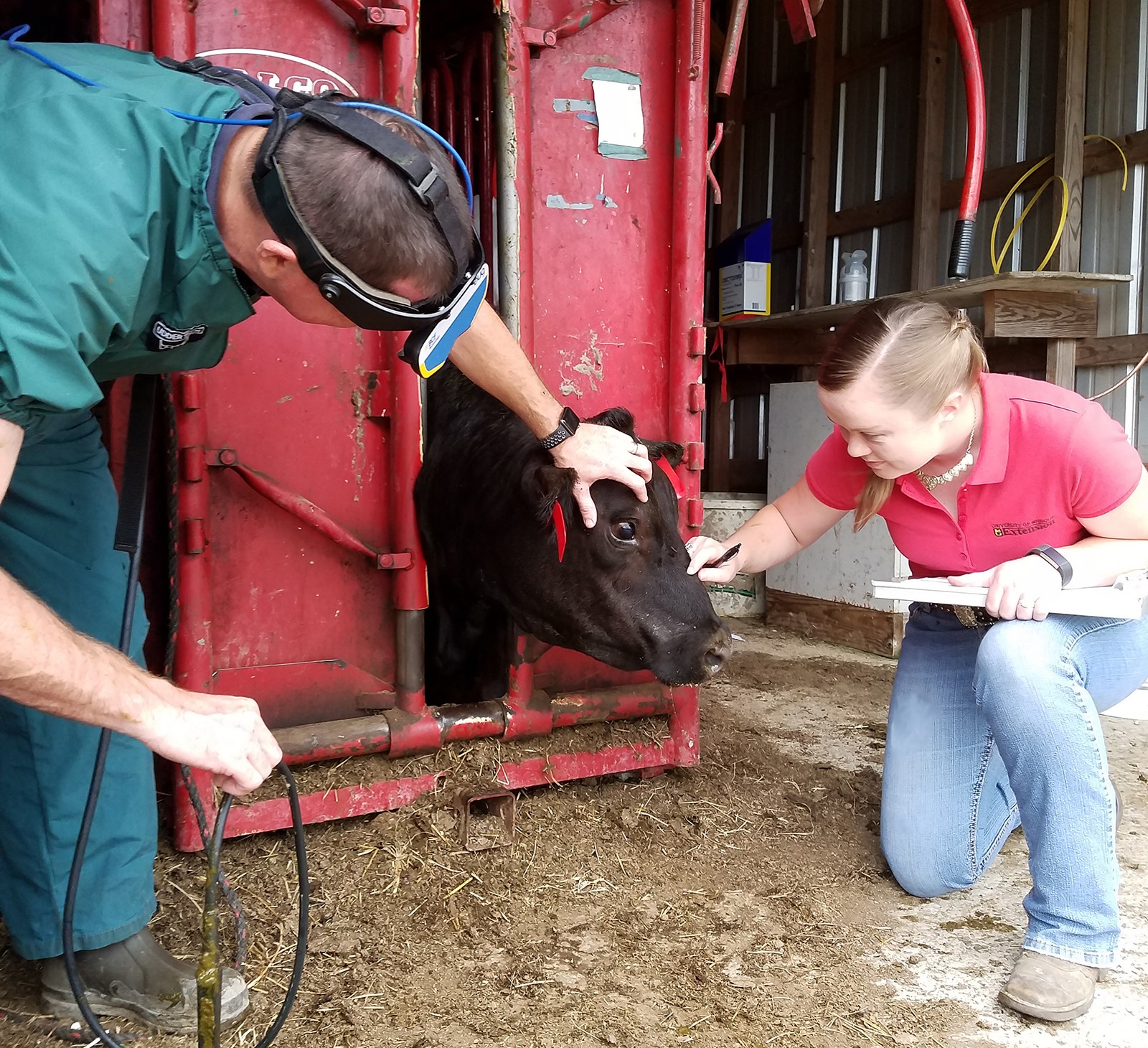MU Extension offers tips on safely handling livestock

COLUMBIA, Mo. – Good livestock handling practices can improve animal comfort and make livestock management safer for people and animals, says University of Missouri Extension livestock specialist Brenda Schreck.
Accidents happen most often during common activities such as feeding, handling, loading and transporting. Schreck says animal behavior specialist Temple Grandin teaches that it is important to understand the behavioral characteristics of livestock to safely handle them.
Livestock are social animals that enjoy the company of people and other animals, but they also like routine. They like to keep handlers in their line of sight and don’t like to be approached head-on or from directly behind – both areas are considered blind spots for animals. An animal’s shoulder is typically considered to be the point of balance, and how and where a handler enters this area may determine the direction the animal will move.
Many livestock animals have a herd mentality of “follow the leader.” If the leader reacts negatively, the rest of the herd follows. Signs of aggression include pawing the ground, aggressive forward movement, snorting and vocalization. Animals may also perk their ears or, depending on the species, pin them back. Handlers should always use caution when at the rear of any species of livestock to avoid getting kicked.
Loud noises and sudden movement can startle animals and cause them to move away. Changes in lighting can also potentially cause alarm. Livestock have poor depth perception, says Schreck. Areas where livestock are going to be handled should have uniform illumination and be painted a single color.
Some male livestock can be territorial, so handlers should be aware and respectful when entering pens or pastures. Also practice caution around female livestock that have recently given birth, because they can be very protective of their young.
Keep equipment in handling and loading areas in good repair. Check gates, fences and pens for sturdiness and sharp edges, Schreck says. Before loading animals, check the trailer for protruding objects or a weakened floor. Animal weight should be evenly distributed throughout the trailer.
Wear personal protective equipment when handling livestock, says Karen Funkenbusch, MU Extension health and safety specialist. Steel-toed safety boots with nonskid soles provide protection against hooves and slipping. Leather gloves and a hard hat also provide protection. Consider proper ventilation to minimize dust and molds that could cause respiratory issues.
For National Farm Safety and Health Week, Schreck gives a few other tips to refresh handling techniques:
- Consider the design of livestock pens and handling plans. Use recommended plans that allow workers safe and easy entry/exit points. Pens should have emergency exits.
- Keep children and bystanders away from livestock handling areas. Label areas to warn visitors to keep away.
- Keep floors as dry as possible in handling areas to avoid falling on slippery surfaces.
- Practice good hygiene and biosecurity to avoid transmitting disease.
- Double-check latches, hitches and chains on trailers before loading animals to transport.
For more information
- MU Extension’s “Animal Handling Safety Consideration,” https://extension.missouri.edu/publications/g1931
- Oklahoma State Extension’s “Cattle Handling Safety in Working Facilities,” https://extension.okstate.edu/fact-sheets/cattle-handling-safety-in-working-facilities.html
- University of Minnesota Extension’s “How To Properly Handle Cattle and Other Farm Animals,” https://extension.umn.edu/dairy-handling-and-best-practices/basic-stockmanship
- National Education Center for Agricultural Safety, http://www.necasag.org
- Cattle information from the National Ag Safety Database, https://nasdonline.org/browse/172/cattle.html
- Temple Grandin’s website, http://www.grandin.com
- “Safe Beef Cattle Handling for Women,” https://ag-safety.extension.org/wp-content/uploads/2019/09/Safe-Beef-Cattle-Handling-for-Women.pdf
- “Safe Dairy Cattle Handling for Women,” https://ag-safety.extension.org/wp-content/uploads/2019/09/Safe-Dairy-Cattle-Handling-for-Women.pdf
Miss Clipping Out Stories to Save for Later?
Click the Purchase Story button below to order a print of this story. We will print it for you on matte photo paper to keep forever.

